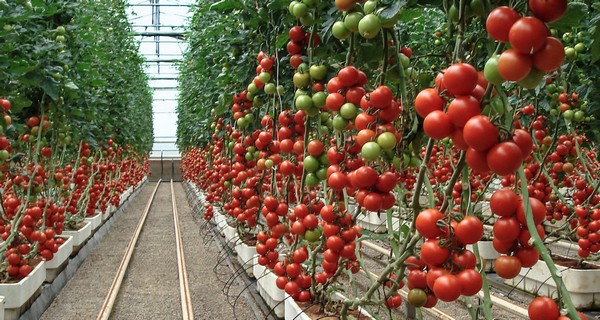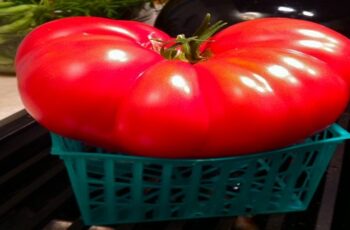Ad Blocker Detected
Our website is made possible by displaying online advertisements to our visitors. Please consider supporting us by disabling your ad blocker.
Although watering your garden in the evening might be the most convenient time for you, it is important to consider the potential drawbacks. The moist conditions and lower temperatures during the evening create an environment that increases the likelihood of your plants encountering diseases.
Watering in the evening allows the foliage and soil to remain damp throughout the night. This extended period of moisture can promote the growth of fungal pathogens and other diseases that thrive in wet conditions.
The combination of moisture and cooler temperatures provides an ideal breeding ground for these harmful organisms to attack and damage your plants.
To minimize the risk of disease, it is generally recommended to avoid watering your garden in the evening. Instead, opt for early morning watering when the sun is rising and temperatures are cooler. This allows the foliage and soil to dry out during the day, reducing the favorable conditions for disease development.
While it may require some adjustments to your watering routine, prioritizing the health and vitality of your plants by avoiding evening watering can ultimately help to prevent diseases and ensure the overall success of your garden.
When And How To Water Tomato Seedlings

Watering tomato seedlings requires a slightly different approach compared to mature tomato plants. Since seedlings are small and delicate, their watering needs differ as well. Here are some important considerations when it comes to watering tomato seedlings:
Starting tomatoes from seeds is a cost-effective option, particularly if you want to experiment with different cultivars or require multiple plants. Purchasing fully-grown tomato plants can be expensive, often costing $50-70 for a batch of plants.
One challenge with tomato seedlings is ensuring adequate watering. When planted in small containers or trays, the soil tends to dry out quickly, demanding daily monitoring and care.
Here are key points to remember about watering tomato seedlings:
- Seedlings have small root systems, so they require relatively little water. Using a spray bottle to mist the seedlings is an effective way to provide moisture while keeping the top layer of soil moist.
- If you accidentally overwater the seedlings, don’t panic. You can improve the situation by moving the seedlings to a location with better airflow. Avoid watering again for a few days or until the soil has dried out to prevent excessive moisture.
- It is crucial to avoid creating a puddle of water around the seedlings. Excess water can lead to root rot and other issues, so ensure proper drainage.
- If you notice that the trays or containers dry out within 24 hours, it is an indication that the seedlings may need to be moved to larger containers or transplanted into the garden. This suggests that their root systems require more space and moisture retention.
What Water Is Best For Tomato Plants
Rainwater is the optimal choice for watering tomato plants, as well as other plants in general, due to its natural composition without any added chemicals. If you live in an area with hard water, the salts present in the water can potentially harm your plants, including tomatoes. In such cases, it is advisable to either utilize a water-softening system or prioritize the use of rainwater.
If feasible, setting up a rainwater harvesting system with proper storage would be an ideal solution for your entire garden. This allows you to collect and store rainwater for future use, ensuring a sustainable and chemical-free water source for your tomato plants and other gardening needs.
By utilizing rainwater instead of hard water, you can minimize the potential damage caused by salts and provide a more natural and beneficial watering solution for your tomato plants, promoting their overall health and vitality.
The Best Way To Water Tomato Plants
Mastering the art of watering tomato plants takes practice, but there are techniques that can help you avoid major mistakes and ensure optimal watering. Here’s the best approach to watering your tomato plants:
Direct Water to the Stem:
When watering tomato plants, it’s crucial to focus on watering the stem rather than the leaves and flowers. This means avoiding overhead watering unless it occurs naturally through rainfall. Holding a hose above the plant and letting the water drip down is not recommended for tomato plants. To efficiently reach the root system, it’s best to water around the base of the stem.
Water Slowly:
Avoid the temptation to quickly pour a large amount of water onto your plants and walk away. This can result in most of the water running off and being wasted, while also leaching away valuable nutrients. Instead, water your plants slowly, allowing the water to be absorbed into the soil rather than rapidly running off. Aim for the water to penetrate the top 5-6 inches of soil in your garden.
Consider a Soaker Hose Irrigation System:
Using a soaker hose system is a practical choice for efficiently delivering water to the root zone of your tomato plants. Unlike traditional watering hoses, which can be cumbersome and potentially damage garden plants, a soaker hose provides a more effective way to deliver water directly to the roots.
The key advantage of a soaker hose is that it can be left in place around the stem of your plants without the need for frequent movement. You can adjust the water flow from the soaker hose, allowing the soil to absorb the water gradually. This method maximizes efficiency and minimizes water waste.

